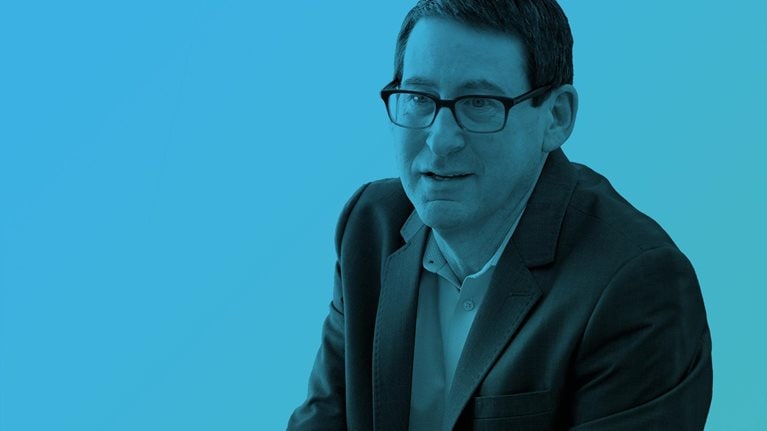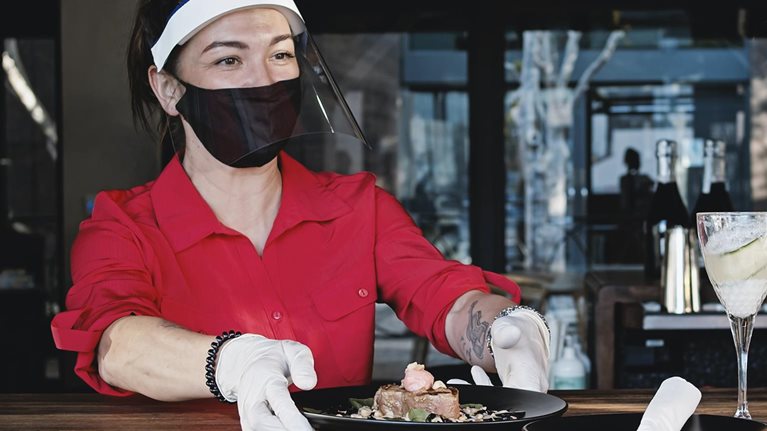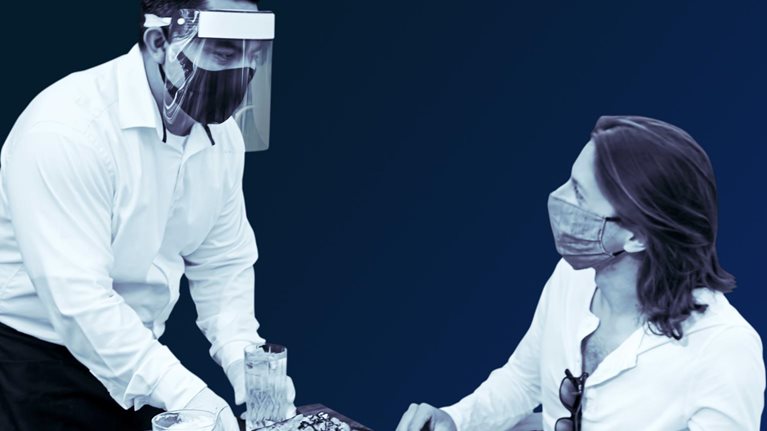Chris Kempczinski had been at McDonald’s less than five years when he was named president and CEO, in November 2019, rising to the top job after his predecessor was fired for violating company policy on personal conduct. And Kempczinski had been in the role for less than five months when COVID-19 shut down many of McDonald’s 36,000-plus dining rooms around the world, sending the company’s revenues plunging and generating high anxiety among employees and franchisees.
It was a tough test for any new CEO. Yet by the fourth quarter of 2020, the company’s global systemwide sales—at $25.8 billion—had fully recovered to its 2019 fourth-quarter sales. Today, McDonald’s looks like it’s on track for a rapid recovery and even, perhaps later this year, robust growth in some of its biggest markets.
In a recent interview with McKinsey’s Greg Kelly, Kempczinski discussed his tenure so far and what the next normal might look like for McDonald’s. The following are edited excerpts of their conversation.
McKinsey: You’ve had quite the baptism by fire. What were your priorities in your first year as CEO?
Chris Kempczinski: It’s definitely been an unusual onboarding into this role. The context of how I came into the job is important to understand: it was very much a values-based situation. So I wanted, right from the start, to emphasize and refresh the core values that define who we are as a company. I focused on being a good listener to understand how people were feeling and what we could do to support them.
Then, all of a sudden, here comes COVID-19, and it significantly disrupts our business. We had the worst quarter in the history of McDonald’s in the second quarter of last year. Our cash flow went down about $2 billion in 2020. Our franchisees were under significant financial stress; there was a lot of anxiety.
As it turned out, the strong emphasis on our core values in early 2020 really hit home and helped us address the challenges we faced when COVID-19 came along. I could never have anticipated how much those messages would resonate. I’m very proud of having put our values front and center.
A big learning for me was realizing that there is no such thing as overcommunicating. I stepped up my communication to make sure that our employees understood what our plan was to get through this—but also to get a lot of feedback. And we were constantly pulse-checking our organization. At the end of the year, we asked our employees, “Did you feel supported in 2020?” and over 90 percent said they felt well supported. That, for me, was incredibly gratifying.
McKinsey: McDonald’s has fared better than many other restaurant chains during the pandemic, thanks to your investments in what you call the “3 Ds”: delivery, drive-thru, and digital. What are your plans in each of those areas? How much consumer demand do you expect to shift back to dine-in when COVID-19 subsides?
Chris Kempczinski: Prior to 2017, delivery was a $1 billion business for us, largely in Asia. By the end of 2019, delivery sales were over $4 billion and we continued to see very strong growth in 2020. Additionally, we’ve been able to expand the number of restaurants offering delivery to more than 30,000. Much of it is done through third-party operators, like Uber Eats, DoorDash, Just Eat Takeaway, and Deliveroo, but in some markets—like parts of Asia, Australia, and Germany—we’re actually experimenting with hybrid models, including self-delivery.
As for drive-thru, we offer it in 95 percent of our US restaurants and nearly 65 percent globally. The thing about drive-thru is that no matter how good you are, you can always get better. In our top markets, our drive-thru service times are now about 30 seconds faster than they were two years ago. We think we can get even faster—and we’re also thinking about ways that the digital experience might work in drive-thru. So, for example, if you are a customer using the app, maybe you have a dedicated drive-thru lane.
We expect to roll out our loyalty program, called MyMcDonald’s Rewards, in the US later this year and in all our major markets over the next couple of years. The MyMcDonald’s platform is essentially an ecosystem of all the things that you can do via digital touchpoints with McDonald’s—think mobile ordering, payments, delivery, rewards, or deals. I’m excited about all the opportunities for us there.
One thing we’ve learned during the pandemic is that if we simplify our business and focus on what we’re great at—like drive-thru and our core menu items—there’s a fantastic benefit for our customers. We’ve seen our customer service scores go up across the globe. We’ve seen our productivity and our restaurant-level margins improve. It was a great reminder about the embedded cost of complexity in our P&L. It wasn’t obvious where that complexity was, but now that we’ve discovered it, we’re committed to keeping our business simple.
Postpandemic, I don’t think dine-in will come back to where it was. In Europe, dine-in was 65 percent of our business in some markets; it might be less postpandemic. So dine-in will still be important, but I think takeaway channels, like delivery, drive-thru, and order ahead with curbside pickup, will stay elevated for the foreseeable future.
McKinsey: In delivery, you’re currently partnering with third-party providers, which means you don’t have full access to the customer data or full control of the customer experience in delivery. Do you see your delivery model changing in the near future?
Chris Kempczinski: We have many options, including multiple global delivery partners, local delivery companies, and self-delivery. Some delivery orders are, as you said, initiated directly on the sites of our delivery partners. Going forward, we expect that many delivery orders will be placed on our own MyMcDonald’s platform, providing us with important data to understand our customers’ preferences and cravings. Regardless of the delivery channel deployed, though, we always focus on our customers’ experiences because customer satisfaction is critical to us.

McKinsey: Marketing has also played a big role in McDonald’s recent financial outperformance. How do you think you’ve improved the company’s marketing since you became CEO?
Chris Kempczinski: The single most important thing I have to do as CEO is ensure that our brand continues to be relevant. And I did feel like we’d gotten a little complacent—that we were stuck in a traditional mode, where we were more just broadcasting, as opposed to really engaging our customers in areas that they’re passionate about. As a brand, you want people to discover you. Pop culture’s a great way to do that; our campaigns featuring [rapper] Travis Scott and [singer] J Balvin have paid off in a big way.
We also need to be operating in the social-media space much more dynamically. When I started my career, 30 years ago, marketing was typically “we’ll develop a campaign and run it for a full year, then we’ll think about it again in a year.” But now we’re in an always-on marketing environment, driven largely by social media. We’re putting ideas out there and getting consumer feedback all the time—we’re in constant iteration mode.
Of course, when it’s no longer a one-way communication, that comes with an added level of risk. You never know exactly what you’re going to get back from customers. But the flip side is that there’s also greater authenticity. My view is that in this day and age, you have no choice—if you want to control the message, you will be an inauthentic brand and you won’t have any resonance. So you just have to accept the unpredictability and risk as part of the bargain to be a relevant brand today. To manage that risk, though, you have to make sure your creative teams are nimble. As you hear feedback, you need to pivot and respond appropriately.
McKinsey: Looking back on your tenure so far, is there anything you wish you’d done differently?
Chris Kempczinski: Yes, a couple of things come to mind. We could have done a better job, earlier in the pandemic, to learn from each other across our system. We had too many instances where a country or market was almost making up the playbook as they went along, and it’s because we weren’t as good as we could have been in sharing best practices.
Also, we could have done a better job demonstrating and articulating what McDonald’s was doing to support communities. Early on, there was a lot of trepidation: “Well, we don’t want to be seen as somehow capitalizing on the pandemic.” But our communities wanted to understand how companies like McDonald’s were supporting them, and our purpose of “feeding and fostering communities” was so aligned with the need of the moment. In the US, we gave out roughly 12 million free meals to first responders. In Australia, we provided consumer staples; people could go to their local McDonald’s to get things like bread, milk, and butter. So I think our reticence to publicize those things early on was a missed opportunity. If I could go back and do it again, I would be more overt in telling our story.
McKinsey: That’s interesting. There are social issues on which you haven’t hesitated to speak out—for example, you put out public statements after the killing of George Floyd and after the attack on the Capitol. Some people feel that McDonald’s ought to take a stance on other issues as well, such as fighting obesity and raising the minimum wage. How do you decide which issues you’ll address?
Chris Kempczinski: It’s true; we get asked to speak out on almost any topic. The challenge for us is to decide where to get engaged. Where do we have an opportunity and a responsibility to make a contribution? And what are things that are best left to others—governments, other companies, or nonprofits?
Here’s how we think about it. First, we have the four pillars of what we call our Corporate Leadership Platform: supporting local farmers and local sourcing, protecting our planet, serving our communities in times of need, and providing jobs and opportunity. We think we have an obligation to speak out on those topics. Beyond our leadership platform, we have our five company values, one of which is inclusion. So when events happen that strike at the heart of our core values, we want to speak out on those occasions as well. As for anything outside of those topics, we want to be helpful, but it’s important to recognize that we’re in the business of selling burgers and fries. That is our primary responsibility, so we try to stay pretty focused.
McKinsey: Might there come a time when your business is more than just selling burgers and fries? What are some of your boldest predictions for McDonald’s over the next ten years?
Chris Kempczinski: This is the fun part of the job—to imagine the “what ifs.” I think about it this way: in the markets that we serve, about 80 percent of the population will go to a McDonald’s at least once a year. Imagine if we could engage with all of those customers, or even just the majority of those customers, on our app. We would have a digital relationship with those customers. A big part of that will be selling food, but we don’t necessarily have to do that in a restaurant; there may be other ways to sell food.
That also opens up a whole bunch of other opportunities for us. If we have that level of consumer engagement on our app, could we do even more for them? If we further build out a hybrid delivery model, do we let others, perhaps, ride on our delivery platform? With a loyalty program, do we welcome other people to ride on the same loyalty chassis? We can think about our business beyond just the four walls of McDonald’s—and perhaps even beyond what is McDonald’s branded—because we have scale and a platform that we, and even others in our industry, could use to deliver important and sustained value to our customers.
McKinsey: Are there companies or thinkers that you look to for inspiration?
Chris Kempczinski: I admire how Amazon constantly talks about Day 1; I think that’s a great orientation and mindset for us to have at McDonald’s. I think Nike does a great job of engaging customers and using pop culture to keep their brand relevant. In the retail space, I have a lot of respect for how Walmart has engaged with their associates to address questions about their corporate brand. There’s a rich trove of best practices out there to learn from.
I’m also a pretty voracious reader, and I’m constantly looking for things that could be helpful to me in my role at McDonald’s. Right now, I’m reading Ten Lessons for a Post-Pandemic World, Fareed Zakaria’s book on what the world might look like when the pandemic is over. That’s a good thought exercise to be going through at this time.


